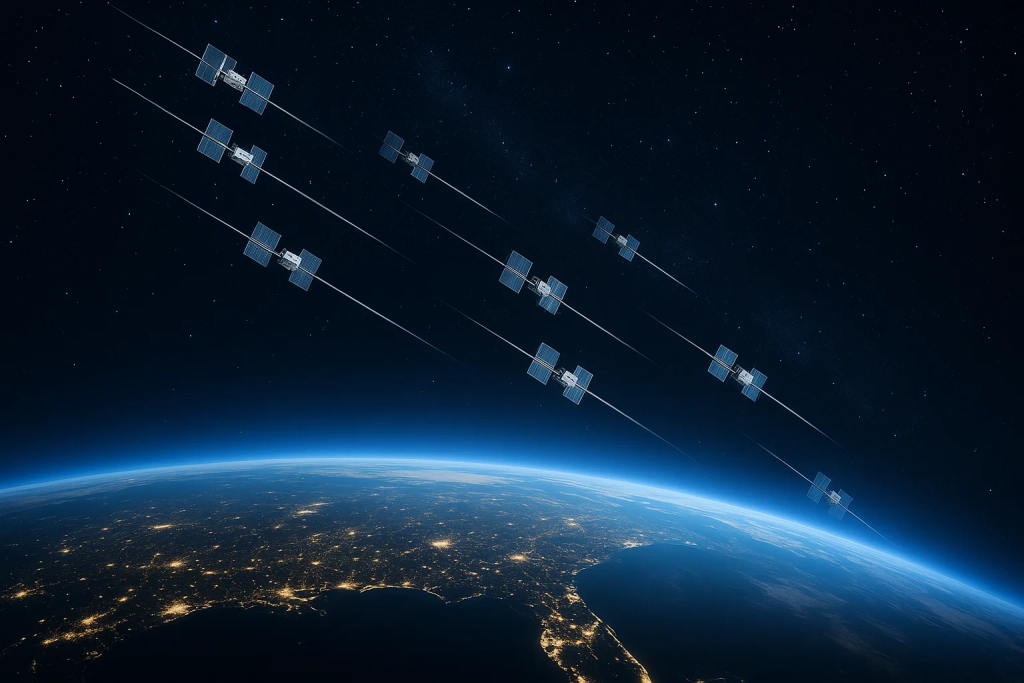SpaceX Pushes States To Scrap Fiber Plans And Redirect All Broadband Grants To Starlink
The fight over America’s broadband future is heating up again, and this time SpaceX is taking direct aim at state governments. In a filing with Louisiana’s Office of Broadband Development and Connectivity, the company argued that the state’s decision to dedicate more than 90 percent of its federal broadband grants to fiber is “wasteful and unnecessary taxpayer spending.” Instead, SpaceX insists, the money should go to its Starlink satellite network.

SpaceX vs. Fiber: Two Competing Visions
At the heart of the dispute lies the $42 billion Broadband Equity, Access, and Deployment (BEAD) program, a federal initiative meant to expand high-speed internet access. Under the Trump administration, rules were rewritten to favor a “tech-neutral” approach, allowing satellite providers like SpaceX to compete more directly with traditional wired services. Louisiana’s final proposal, however, still leans heavily on fiber infrastructure.
Louisiana intends to spend about $499 million to connect roughly 128,000 homes and businesses, the majority through a consortium of fiber providers. Starlink, in contrast, was awarded just $7.75 million to serve 10,327 locations. SpaceX argues it could have covered nearly all households for under $100 million, claiming the state ignored the new federal rules that emphasize cost efficiency.
The Case For Fiber
State officials remain cautious about going all-in on satellites. Fiber, though more expensive to deploy, is widely considered “future-proof” because capacity can scale dramatically as technology improves. A single fiber line can eventually deliver multi-gigabit speeds without replacing the underlying infrastructure. It’s also immune to congestion issues that plague wireless systems.
Louisiana’s broadband office has noted concerns about Starlink’s long-term viability, pointing out challenges such as limited spectrum, susceptibility to weather, interference from trees, and capacity strain in densely populated areas. Simply put, fiber can handle the demand of tomorrow, while satellites may hit performance ceilings.
The Case For Starlink
SpaceX counters that states are clinging to outdated thinking pushed by entrenched telecoms. Because Starlink’s satellites already cover rural America, no costly digging or pole attachments are required. That allows for rapid deployment at a fraction of the upfront cost. For hard-to-reach rural households, Starlink may be the only viable option in the near term.
In its filing, SpaceX accused Louisiana of bowing to “a legion of fiber lobbyists and other hangers-on seeking to personally benefit from massive taxpayer spending.” The company says funneling money into fiber projects ignores cheaper, faster-to-deploy alternatives.
The Numbers Behind The Debate
- Louisiana’s plan: $499 million for 127,842 households (average cost per location: $4,449).
- Starlink’s proposal: under $100 million for nearly all households (average cost per location: $750).
- Current allocation: Starlink receives $7.75 million, while a fiber consortium nets $378 million.
From a pure cost perspective, Starlink appears cheaper. But critics argue those savings are misleading because satellites require ongoing replenishment. Starlink’s satellites last only a few years before burning up in the atmosphere, demanding continuous launches. Fiber, once laid, can serve communities for decades with only equipment upgrades.
Bigger Concerns: Monopoly And Control
Beyond cost and speed, some observers worry about putting national broadband infrastructure in the hands of a single private company. Starlink’s critics note that satellite service quality can degrade as more users join, and that pricing could climb once alternatives are eliminated. Others point to the risks of centralized control, citing incidents where Elon Musk restricted or altered Starlink’s availability based on geopolitical or business considerations.
What Happens Next
SpaceX has warned it will ask the National Telecommunications and Information Administration (NTIA) to reject Louisiana’s plan unless it shifts more money toward satellite service. That sets up a showdown between state governments betting on fiber and federal agencies under pressure to consider cheaper, faster-to-deploy technologies.
The broader fight isn’t just about Louisiana. SpaceX has already raised similar objections to Virginia’s broadband proposal, and more states could find themselves in the crosshairs. The outcome may redefine whether America’s internet future is wired, wireless, or some combination of both.
A Divided Path Forward
In reality, both technologies may be necessary. Fiber offers unmatched speed and reliability for urban and suburban communities, while Starlink fills gaps in remote regions where laying fiber makes little economic sense. But with billions of taxpayer dollars at stake, the debate over who gets the lion’s share is less about technology and more about politics, lobbying power, and competing visions of infrastructure.
For now, Louisiana and other states seem intent on fiber-first strategies, betting that investing more today will pay off for generations. SpaceX, on the other hand, is making the case that cheaper and faster is better, even if it means relying on thousands of satellites that must be replaced again and again.
The clash between fiber and Starlink isn’t just a technical argument, it’s a philosophical one about whether public infrastructure should aim for permanence or flexibility, whether governments should plan decades ahead or chase rapid short-term coverage. And it’s a battle that will shape how millions of Americans connect to the digital world in the years ahead.